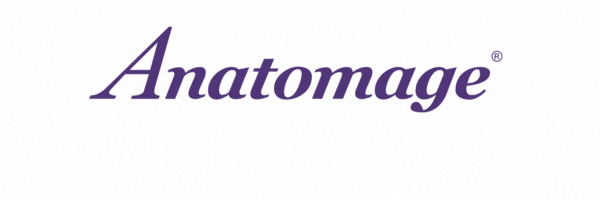Nursing Program Successfully Adopts 3D Anatomy Lab With Anatomage Table
[vc_row][vc_column width=”1/1″][rev_slider_vc alias=”umich”][/vc_column][/vc_row][vc_row bg_color=”#ffffff” section_arrow=”false” text_color=”custom” custom_text_color=”#000000″ top_padding=”5″ bottom_padding=”5″ full_height=”true”][vc_column bg_color=”#1a0028″ column_padding=”padding-5″ column_center=”true” text_color=”light” width=”1/1″][minti_headline size=”fontsize-l” weight=”fontweight-700″ transform=”transform-uppercase”]Table Utilized In Undergraduate Nursing Courses As A Virtual Anatomy Lab
[/minti_headline][vc_column_text]
The Table was integrated into the undergraduate nursing curriculum at the University of Michigan. Specifically, students directly interact with the Table during anatomy and physiology (A&P) courses. Students have the opportunity to work through assignments and interact with 3D anatomy material they were exposed to in lecture.
[/vc_column_text][/vc_column][/vc_row][vc_row bg_color=”#ffffff” section_arrow=”false” text_color=”custom” custom_text_color=”#000000″ top_padding=”5″ bottom_padding=”5″][vc_column bg_color=”#1a0028″ column_padding=”padding-5″ column_center=”true” text_color=”light” width=”1/1″][minti_headline size=”fontsize-l” weight=”fontweight-700″ transform=”transform-uppercase”]Integration Into Course & Virtual Anatomy Lab Structure
[/minti_headline][vc_column_text]
Students interact with the Table weekly during lab, which was is all day on Fridays. The course is currently comprised of about 160 total students. As of right now, the lab portion of the curriculum is a part of lecture. Since the Table’s use has been successful, the program is working to adjust the curriculum beginning in winter 2019. They’ll soon have 2 hours of lab time per week to focus on learning directly with the Table. Students can also sign-up for individual time with another Table that is available at the health sciences library. This is especially beneficial for students who want to have additional study time with the material.
[/vc_column_text][/vc_column][/vc_row][vc_row bg_color=”#ffffff” section_arrow=”false” text_color=”custom” custom_text_color=”#000000″ top_padding=”5″ bottom_padding=”5″][vc_column bg_color=”#1a0028″ column_padding=”padding-5″ column_center=”true” text_color=”light” width=”1/1″][minti_headline size=”fontsize-l” weight=”fontweight-700″ transform=”transform-uppercase”]Interactive Skeletal & Muscular Visualization
[/minti_headline][vc_column_text]
Currently, students use the Table to analyze body movements by mainly examining muscles, bones, and nerves. They’re assigned a type of movement and are asked to identify the structures that are involved by interacting with the full body cadavers. Examples of movements students work through include sit-ups, standing, and swallowing. Depending on the lecture topic, instructors decide which main structures should be visualized on the Table. They create worksheets for students to use in conjunction with these assignments.
Students find visualizing muscular and skeletal structures on the Table extremely helpful. Students utilize the Table to view structural relationships and enjoy being able to easily flip the cadavers over. They also use the Table as a resource to dig deeper into the gastrointestinal tract, specifically with topics like portal circulation. Teaching assistants have also introduced pathology concepts from the Table into the curriculum, which isn’t normally focused on in the course. It’s been a nice addition for students to interact with unique clinical cases from the Table’s library.
[/vc_column_text][/vc_column][/vc_row][vc_row bg_color=”#ffffff” section_arrow=”false” text_color=”custom” custom_text_color=”#000000″ top_padding=”5″ bottom_padding=”5″][vc_column bg_color=”#1a0028″ column_padding=”padding-5″ column_center=”true” text_color=”light” width=”1/1″][minti_headline size=”fontsize-l” weight=”fontweight-700″ transform=”transform-uppercase”]Furthering Nursing Curriculum With Virtual Anatomy Labs
[/minti_headline][vc_column_text]
Overall, implementation of the Table into the undergraduate nursing curriculum has been highly positive for instructors and students. The program is working to expand use of the Table in the program by offering students more dedicated course time with it. Eventually, students will begin to use the Table for examination and quizzing purposes as well.
[/vc_column_text][/vc_column][/vc_row][vc_row type=”full_width_section” bg_image=”18488″ parallax_bg=”true” text_color=”light” top_padding=”170″ bottom_padding=”170″ row_id=”#airwaydentalscience”][vc_column column_padding=”custom-padding” column_custompadding=”0px 0px 0px 50px” width=”1/3″][/vc_column][vc_column width=”1/3″][vc_column_text]
Reference
Brown, P. (2016). CASP 2016 Evals [PowerPoint Presentation].[/vc_column_text][/vc_column][vc_column width=”1/3″][/vc_column][/vc_row][vc_row type=”full_width_section” bg_color=”#2b033d” text_align=”center” top_padding=”50″ bottom_padding=”50″][vc_column width=”1/1″][minti_callout bgcolor=”#2b033d” textcolor=”#ffffff” buttontext=”Contact Us” url=”https://anatomage.com/contact/” buttoncolor=”color-8″]Would You Like To Schedule a Meeting?[/minti_callout][/vc_column][/vc_row]
